The Girls of Rural Nicaragua
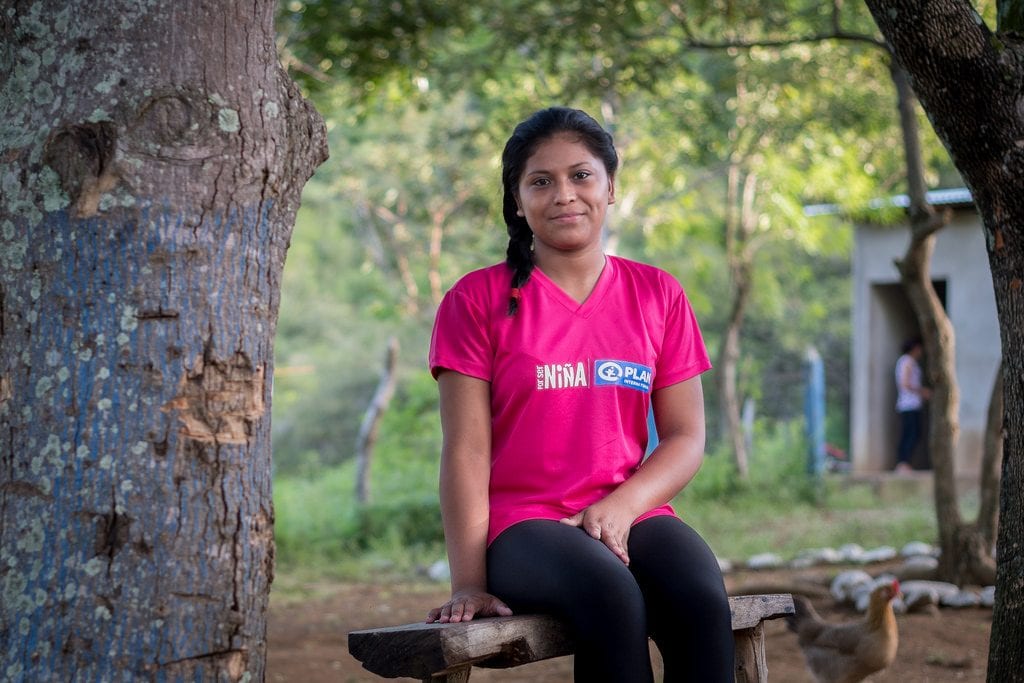
By Yamlek Mojica (Confidencial-Niu)
HAVANA TIMES – The Tepesomoto hill, 231 kilometers from Managua, offers a rainy season panorama of green and navy blue. Marely Albir Figueroa, 16, is all too familiar with this view. She gets up at 4 in the morning to fetch water from the well near her community; on the way back, with the heavy container on her small head, she watches the dawn in its full splendor.
Mansico, where she lives, is a small rural community in the hills, located some eight kilometers south of Somoto. The roads in the area are full of rocks, with potholes carved out by the rains, making them impassable for vehicles. But this doesn’t stop Marely, who walks on them for hours to get water, go to classes, give workshops on sexual health or practice rural theater.
“It’s tough being a girl here,” she notes regretfully, adding: “But that’s not an obstacle, and never will be.” In Manisco there are more than 270 families that daily face these same conditions according to Plan Internacional Nicaragua, a community development organization focused on children.
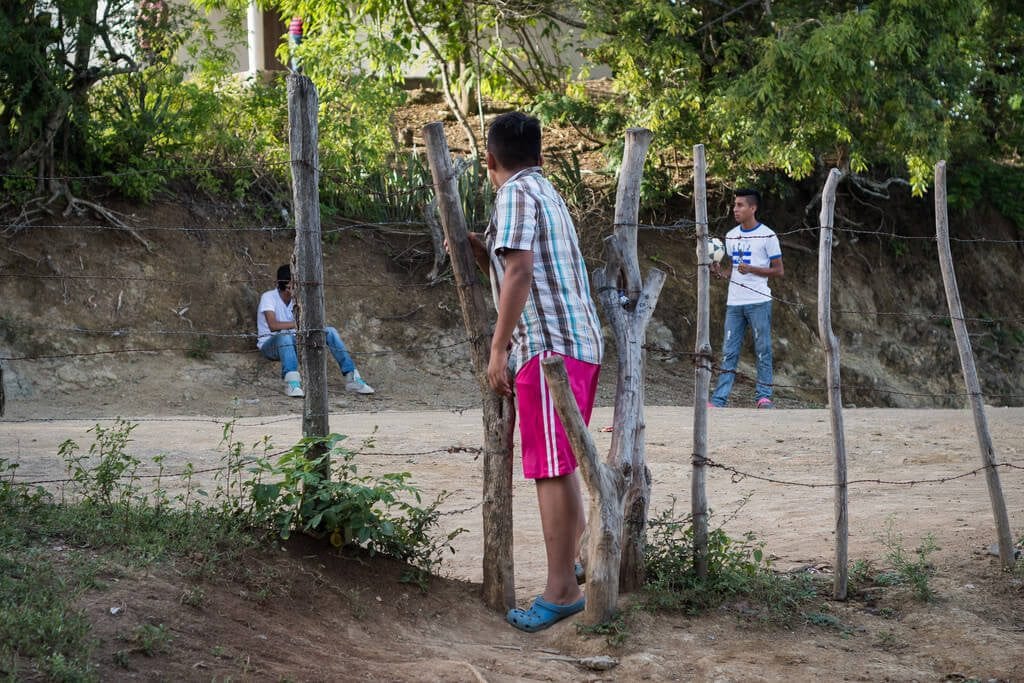
To get to school she has to leave Manisco with its trees and tiny streams that become dangerous in the rainy season. She crosses two other communities made up of small houses of boards, mud and plastic, hundreds of meters apart and separated by tree trunks and barbed wire.
She sits on an improvised bench at her school, while the children run around her on the dirt play yard. The sound of the roosters, crickets and frogs fill the air. “I’m privileged, and that’s why I’m an activist; to help those girls who don’t have the pleasure of being here today. That’s who I’m fighting for,” she emphasizes.
She’s “privileged,” because it only takes her about an hour to get to school, if she walks fast. Others, she tells us, would need to walk for more than two hours, and the only way to reach the rural school is on foot.
“Riding a bicycle is risky,” she explains. The roads, besides being in bad shape, all lead uphill and there’ve been a lot of accidents. “When the kids fall, they don’t fall onto flat ground, but onto rocks, mud and a bunch of other things. Sometimes they get knocked unconscious. It happened to me once,” the young girl tells us.
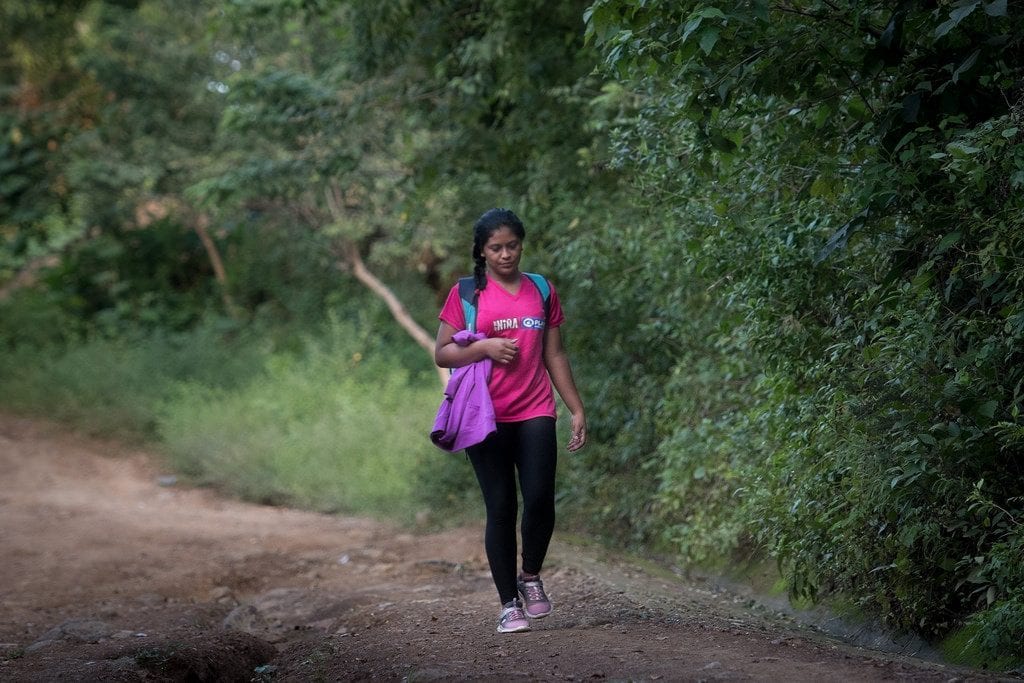
Her classes are in the afternoon. The children dedicate their mornings to hauling water, helping in the fields or caring for their younger brothers and sisters. Marely’s parents work in carpentry, agriculture, baking bread to sell, and anything else they can find. It falls to Marely and her two brothers to do the housework and haul the day’s water.
The landscape of cool tones looks like a utopia. However, in March that same line of green leafy trees was a desert yellow. Mansico and the surrounding communities – all located in Nicaragua’s arid belt – went through one of the worst water crises ever, since there was hardly any rain for nearly three years.
“What happens in the community directly affects the girls who live there,” Marely explains. “during the drought, we had to get up at four in the morning to go haul water, and if we arrived five minutes late sometimes we were left with nothing.” The situation now is similar, but the rains have helped supply the aquafers, reducing the inhabitants’ difficulties.
The well closest to her house is over a kilometer downhill. On the return trip, she has to go back up the same road carrying the bucket of water on her head and steadying it with one of her arms, trying not to let anything get spilled. The water she carries can only be used for drinking and cooking.

To wash clothes and bathe, the family goes to the closest streams. “It’s dangerous because someone could come there and rape a girl while she’s bathing in those places,” Marely admits. According to Plan International Nicaragua, no cases of this type have been reported in Mansico, but the community remains on alert.
“Sick as I am, I try to take care of my little girl,” says Maria Sinforosa Figueroa, Marely’s mother. She and her husband, Donaldo Albir, suffer from arthritis due to the coffee picking work they did for years. “I try to be considerate of my parents – I don’t want them to move around a lot, and I like doing things for myself. The problem with bathing is that it’s very isolated, but several of us go together, and that’s why nothing happens to us,” the young girl says smiling.
Maria and Donaldo met in the mountains during the coffee picking season. He was 17 and she was 12, but: “we fell head over heels in love,” they tell us. He was from Esteli, while she was a native of the Chorotega indigenous community located in Tepesomoto. They went to live on the highest part of the hill, some 1,700 meters above sea level. Six years later, they had their first child.
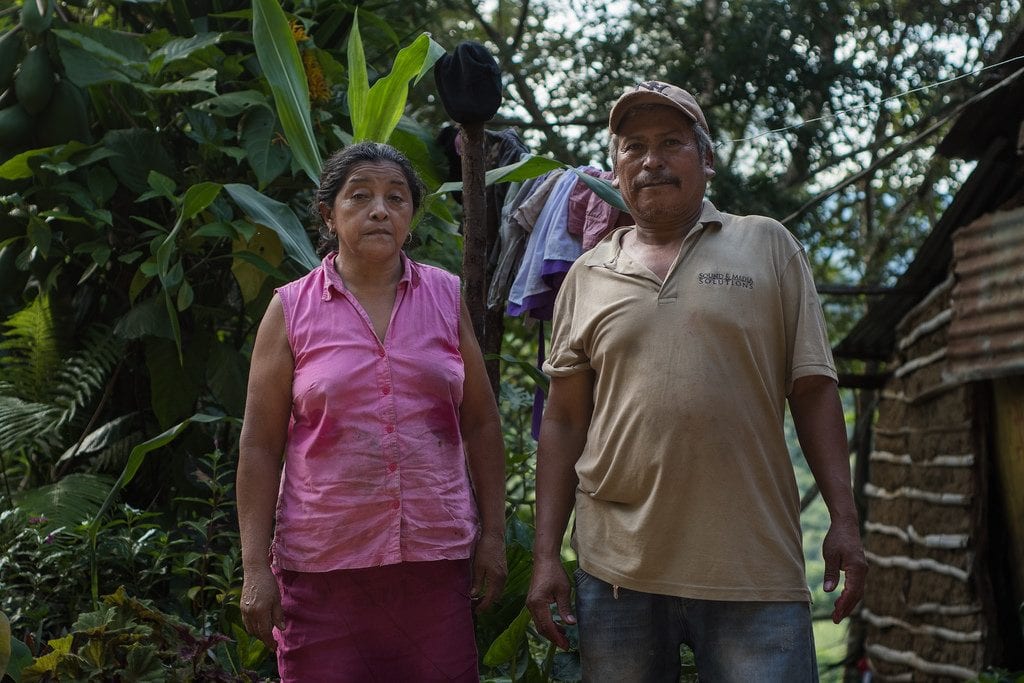
Maria is just under five feet tall, with an oval face and copper-colored skin. Her hair is long and jet black, but she generally wears it up, so it doesn’t get in the way while she cooks. She walks slowly, with a hand holding her side for support. Several months ago, she suffered a crisis in her knees and she couldn’t get up.
Today, she’s roasting coffee beans recently brought in from the hills. The oven she uses, she tells us proudly, “is one of the most modern in the community.” Suddenly she sits down in a broken plastic chair because, “I can’t stand the pain in my feet anymore.” Donaldo leaves off carving the wood for a carpentry job he’s doing and comes over to care for the coffee.
Nineteen years ago, they were living some five kilometers further up the hill. However, their home was destroyed by Hurricane Mitch and they resettled further down. Marely was born and raised here, the youngest of seven and – as they tell it – “the most pampered.”
“She was very sickly. One time, she took a bad fall off the bed and hit her head. He (Donaldo) was off picking coffee and I had gotten up to clean the house, and she fell down. We had to make many, many trips to the doctor, because her head was affected and she had seizures,” Maria recalls.
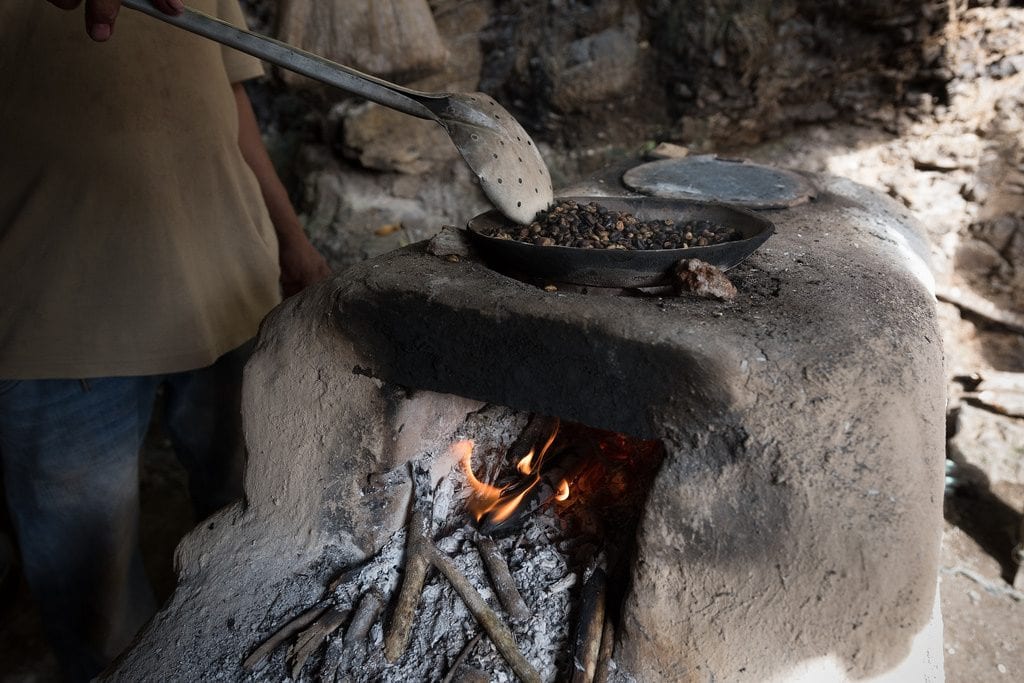
At that time, it was a ten kilometer walk to the hospital in Somoto. The medication had to be brought in from Honduras, and they had to work double to be able to pay for it. Now there’s a health center in Santa Isabel, less than four kilometers from Mansico, although the medication is still scarce. “Our little girl has been expensive,” they explain.
But if there’s anything they’re proud of, it’s these three things: Donald’s carpentry, Maria’s kitchen and Marely’s intelligence.
Donaldo is a self-taught carpenter who makes machetes or plowshares for 100 or 200 cordobas (US $3 – $6.50). When he can save enough for the supplies, he makes guitars and sells them for a thousand (US $33). He does this for love, not for money. “From a guitar I clear at most 300 cordobas (just under US $10), but since I enjoy making them, I do it happily,” he says with a sing-song country accent and a smile from ear to ear.
Maria, for her part, sells nacatamales for US 30 cents, and bakes bread that she sells for one cordoba apiece. “Truly, everything I make comes out delicious. If I went to Somoto to sell my baked goods, I could charge more, but I can’t do that because of my knees. People here are poor, and with effort we make about 100 cordobas a day (about US $3.50) from this. I can’t charge any more, no matter how good the bread turns out,” she expresses with regret.
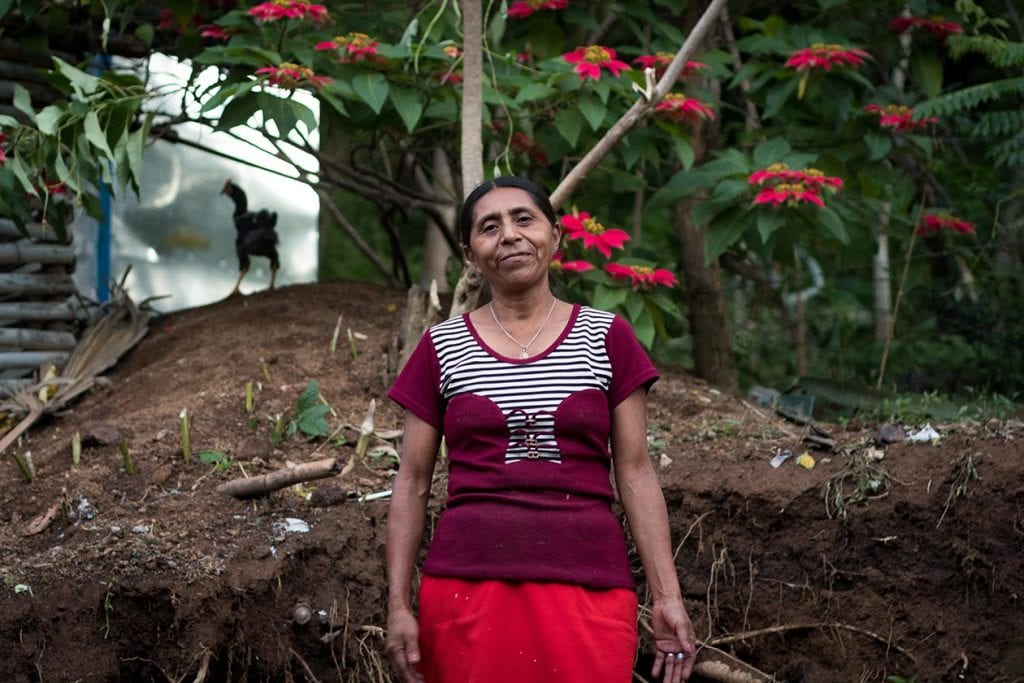
Marely strongly resembles her mother, but she has her father’s height and smile. Those who know her describe her as “cheerful, studious and centered.” She affirms that she gets her perseverance from her parents, but has also been energized by the trainings at the organization Plan Internacional.
Nicolasa Gutierrez is a witness to the young girl’s persistence. Nicolasa, an indigenous Chorotega leader of 54, chaperones a group sponsored by the Plan called “Champions for Change”. She takes Marely and other young girls to the organization’s offices in Somoto to receive workshops on sexuality, gender equality and health.
“The problem in Mansico is that there’s no work here, leaving the young girls out in the cold because they go off to work in the cities. I try to take care of them and to watch over them, so that they’re not alone,” Nicolasa admits.
She leaves her house after preparing the meal for her husband and son, who go out to work on the farm at six in the morning. Later, she begins to round up the girls to take them to Somoto. They can’t go alone, there are bad people who might hurt them,” she laments.
“When water is scarce, the children can even die. Then there are also robberies, and the easiest targets are the smallest ones. Often, there’s no one home taking care of them, all the older people are in their world of work, because here you have to chase after it, the leader assures.
The accompaniment she offers the girls is also aimed at avoiding teen pregnancies, a very common problem in this rural zone. Nicolasa plays the role of youth counselor for Mansico. The girls come in the afternoons to ask for her suggestions for overcoming the problems that they face, often times of domestic violence.
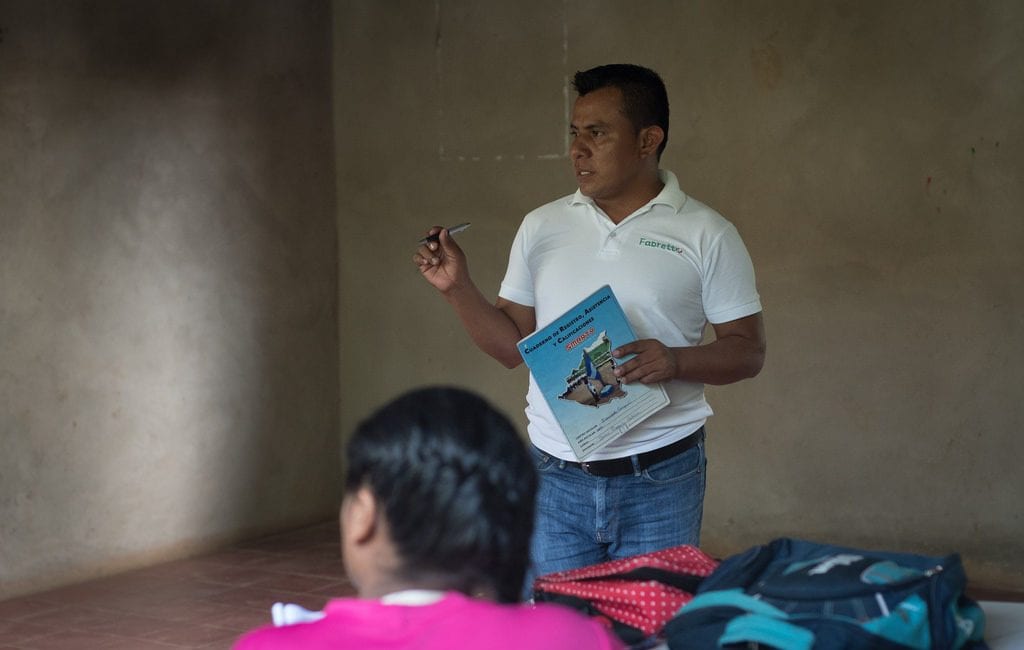
Rural education as a tool for change
Inside the rural school called Padre Fabretto, the conditions are precarious. There aren’t any chalkboards, and there are barely any seats for the students. The primary school was founded 25 years ago, but secondary school classes only began two years ago, with help from the Fabretto Foundation and Plan Internacional. According to Rigoberto Gutierrez, one of the teachers, for the children, (the school) offers an escape from all of the chores they do at home.”
However, of 90 students who registered for the rural secondary school this year, only 84 still continue. And of the 16 girls who entered school in Marely’s generation, she’s the only one who hasn’t dropped out. “The young people leave school because they need to work, or others because they got pregnant, because the family is leaving or because they don’t have the backing of their families. Teenagers of 14, 15 years drop out for those reasons. Nowadays, though, it’s less common among girls like her (Marely) who get some trainings that empower them,” Rigoberto tells us.
According to Plan Internacional Nicaragua, one of the biggest problems in Mansico and the surrounding communities is that of teen pregnancy. “The older men come to wait for the girls after classes to “hit them up”. They end up pregnant, and they have to leave their studies. It’s a critical problem,” states the teacher.
“How can it be that instead of planning for our future we have to change diapers? How can we see this as good?” wonders Marely. It’s so common, that people constantly ask her, at 16, how come “she hasn’t paired up with somebody” and “When are you going to start raising babies?” “More than make me angry, these comments make me sad about the mentality these people have,” she says.
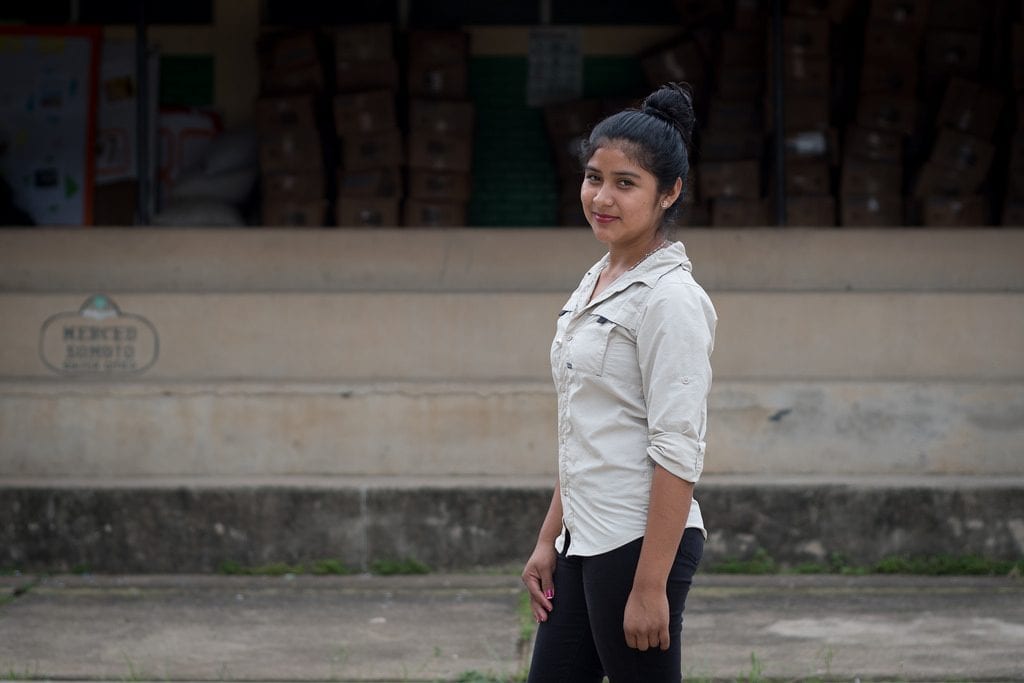
Father Fabretto has had two generations of high school graduates: Maricel Gutierrez, 19, managed to graduate and now is in her second year of nursing at Martin Luther University in Ocotal.
Maricela takes Saturday classes, and cooks and sells nacatamales during the weekday to pay for her studies. Her parents are farmers who earn between 70 and 100 cordobas a day. ($2 – $3). “They help me with what they can, but I have to go out and earn my own education,” she explains.
“It’s very hard to study in the countryside, because of all the difficulties that come up. Sometimes I can’t get transportation, and then I have to walk to Somoto and from there get a ride to Ocotal. Sometimes I don’t have the fare, or I can’t eat at the University because I don’t have enough money. It doesn’t matter, because my mind is focused on getting my nurse’s license, whatever it takes,” the young woman says.
Maricela also helps out with first aid in the community, so that people don’t have to travel to the health center in this community of very scattered and distant residences. “My dream is to put a clinic on the hill, so that people don’t have to go so far or suffer so much,” she states smiling.
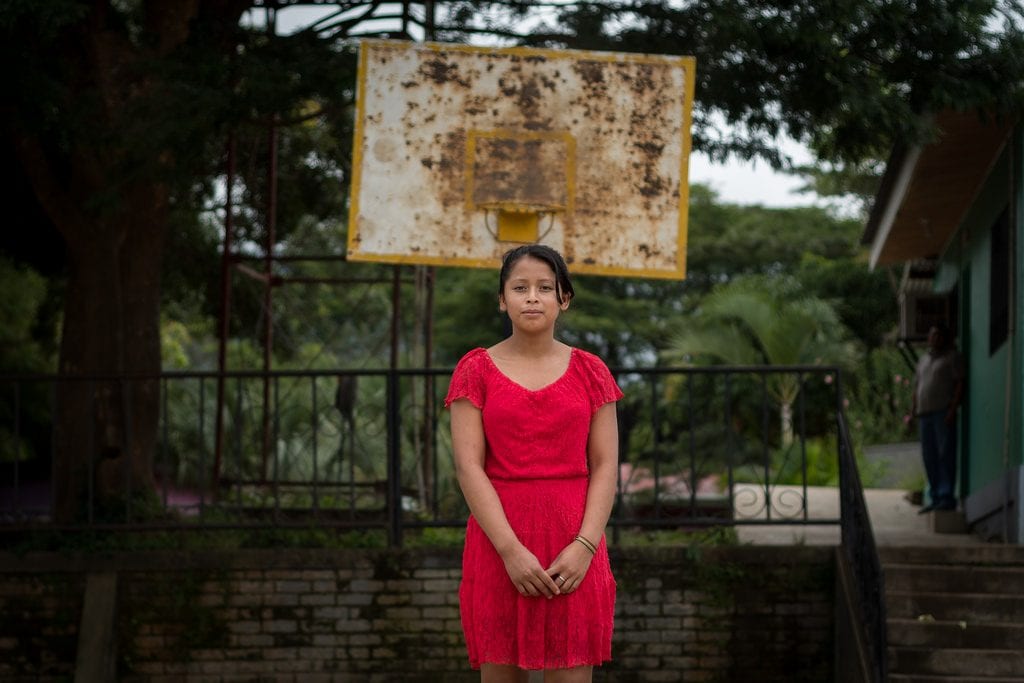
She and Marely belong to a community theater group for youth, led by fifteen-year-old Emiliana Munoz. The group began a year ago, and the works they stage are a reflection of the community: marked by violence, pregnancies and scarcity of water. “In our communities, there’s so much discrimination that nobody sees. With our theater pieces we try to get people to pay attention,” Munoz affirms.
They present their works in the communities near the school, but they’ve also gone to the towns of Somoto and Ocotal to present before the municipal authorities.
Emiliana dreams of taking her plays to the capital. “I don’t want this to just remain here, I want everyone to know that we’re doing something,” she declares. There are over 20 young people from the communities of Tepesomoto in the group.
“Now the theater absorbs the free time that the kids used to use to go out and get in trouble,” Rigoberto admits. The teacher also notes that since the group began last year, there’ve been fewer cases of domestic violence, and the boys are more empathetic when talking about gender issues.”
Another of Emiliana’s goals is to learn English and to teach math, to bring her knowledge back to the communities. In Mansico according to the last national census in 2005, not one of the inhabitants had completed a university degree. According to Plan Internacional, for every 10 girls who graduate from high school, four go on to the university, but not all of them finish.
The goal of Marely, Maricela and Emiliana is to leave their lands, to study and to return to better the lives of all the community’s inhabitants.
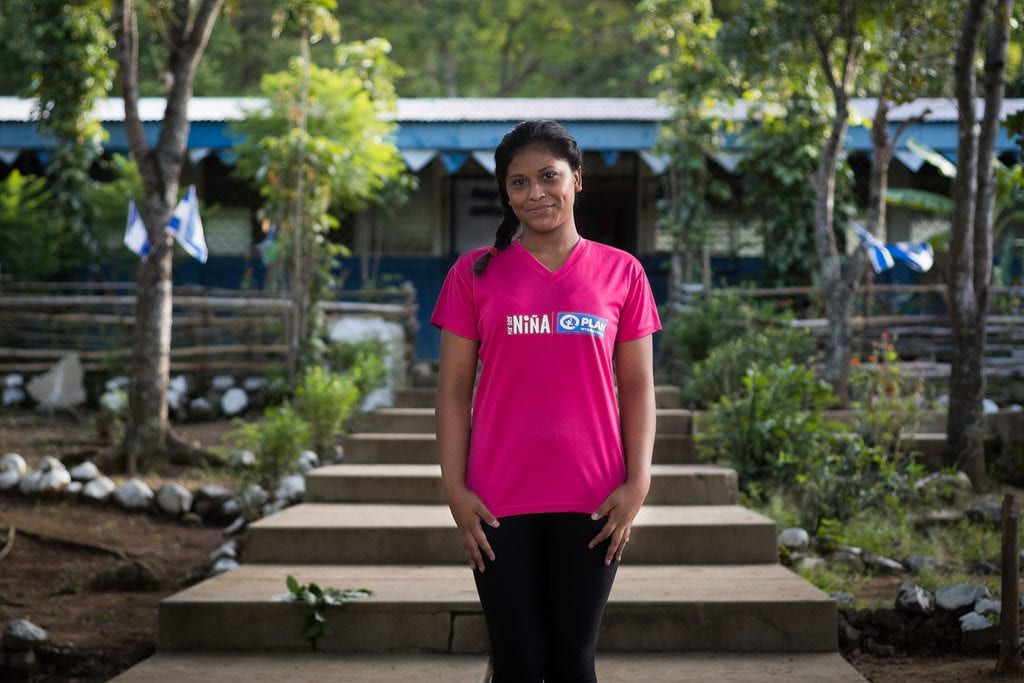
“People are surprised that we don’t have children, and that we want to leave here,” notes Marely. After graduating from high school, she plans to go to Managua to study communication with a focus on written journalism. Nevertheless, she also wants to educate people in the capital about the customs and traditions of “her land.” I’m not embarrassed to say that I’m from here, I’m proud of it,” she asserts.
The green tones of the mountain accompany Marely. The roosters, crickets and frogs are all speaking while she does, supporting her statement: “I’m an activist because I want to give a voice to all the girls that don’t have one. I want to be a journalist to give a voice to all my people.” Her dreams are big ones, but her roots are even bigger.






Nicaragua is full of incredible stories. You can see people struggling to get food and other basic supplies. Many families of around 6 people live with 1 dollar a day. It’s hard.
If you go to Nicaragua especially a weekend, the nacatamal is what you are prescribed to eat, it is delicious a little heavy and cheap, I enjoyed this report and I know that Nicaragua has other points to visit, especially for its food and tourism , regards.